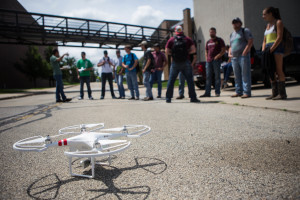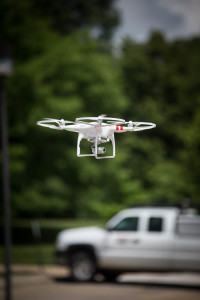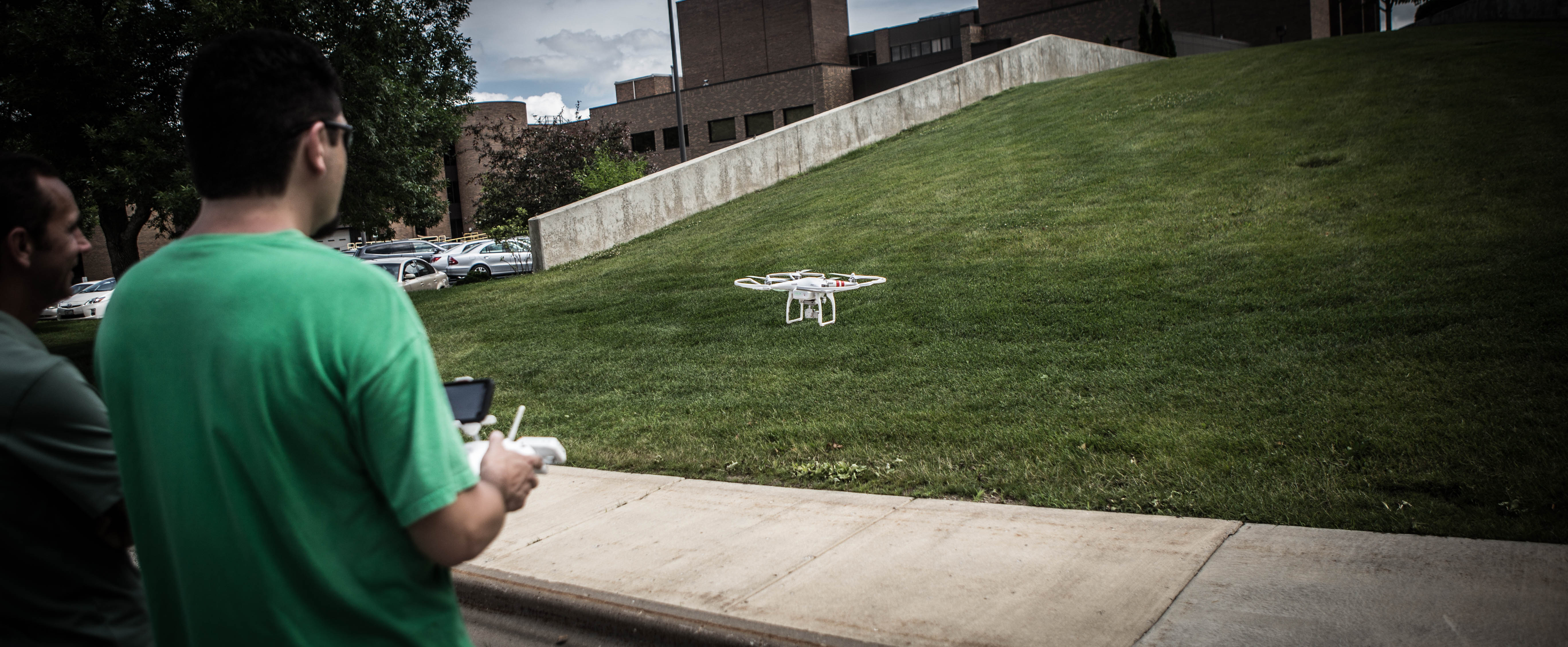Drones in Class: A New Era for Agriculture
Lamont Kimberlin, Harbinger
Thursday, Sept. 3, 2015
There have been numerous stories in the media involving drones, some of which have created public concern over civilian casualties of war and privacy issues abroad. However, there are positive sides to the world of drones, such as drone application in agriculture, which students at Illinois Central College will experience this fall.
Drone technology made its appearance at ICC when Associate Professor of Agricultural, Pete Fandel, led his class on a drone flying exercise outside the Agricultural and Industrial Technologies Building this summer.
Fandel is one of the creators of a newly approved agricultural program, set to begin this fall at ICC, which teaches students about the use of drones in assisting farmers with time consuming tasks, such as observations in the field.
Fandel said that the United States is lagging behind in regard to the domestic applications of drone use, compared to countries such as Japan, and there are rapidly developing technologies coming to fruition in this unchartered territory.
“In Japan, for instance, they have developed their use of drones in agriculture to where they are not only observing, but they are actually applying nitrogen to depleted soil via drones,” Fandel said. “We have exciting technologies heading our way in this field, such as thermal imaging, which can identify the amount of nitrogen that an area is lacking.”
“With the use of drones we can identify bad spots, such as yellowing leaves, caused by nitrogen depletion after the rain washes the nitrogen away, and that is a visual sign.”
“But with thermal imaging, we will soon be able to know how much nitrogen to add and where to add it,” Fandel said. “The use of this technology is already happening in Japan, so we are excited to see these technologies develop here at home.”
Regarding the drone’s operating difficulty, Fandel said, “It takes some getting used to, but it is very user friendly as you can see. The Phantom 2 has a range of about 1,000 feet and a battery life of around 20 minutes.”
With the Global Positioning System, the drone operator can let go of the controls while the drone is in the air and the drone will stop and hold its position. Another feature that is made possible through GPS is the drone’s ability to return to a specific location if it is moved by the wind or other forces.
The drone used by Fandel is a Phantom 2 and it is produced by DJI, a technology company based in China. The drone comes with software that can be used in concert with a computer or smartphone. The operator’s phone can be conveniently connected and held in place by the remote control. This allows the operator to view the video image being picked up by the drone’s camera from their phone while they control the drone’s flight path.
The Introduction to Precision Agriculture and Crop Production are two classes at ICC featuring the drone. Those interested in the program can find more information online at:
For more information about the Phantom 2, as well as additional products offered by DJI, visit:



